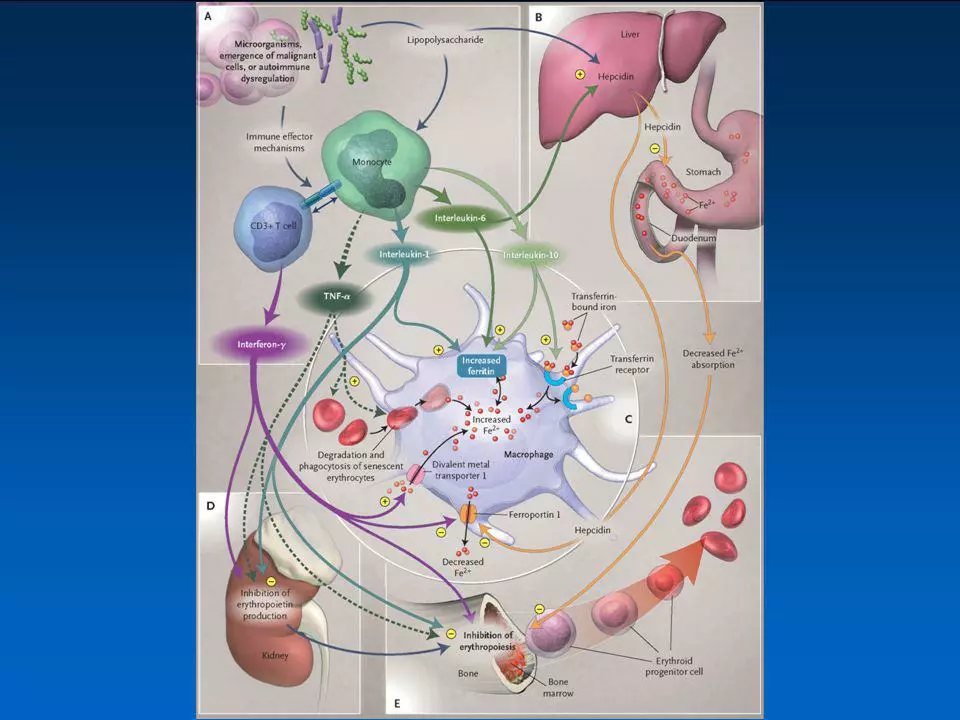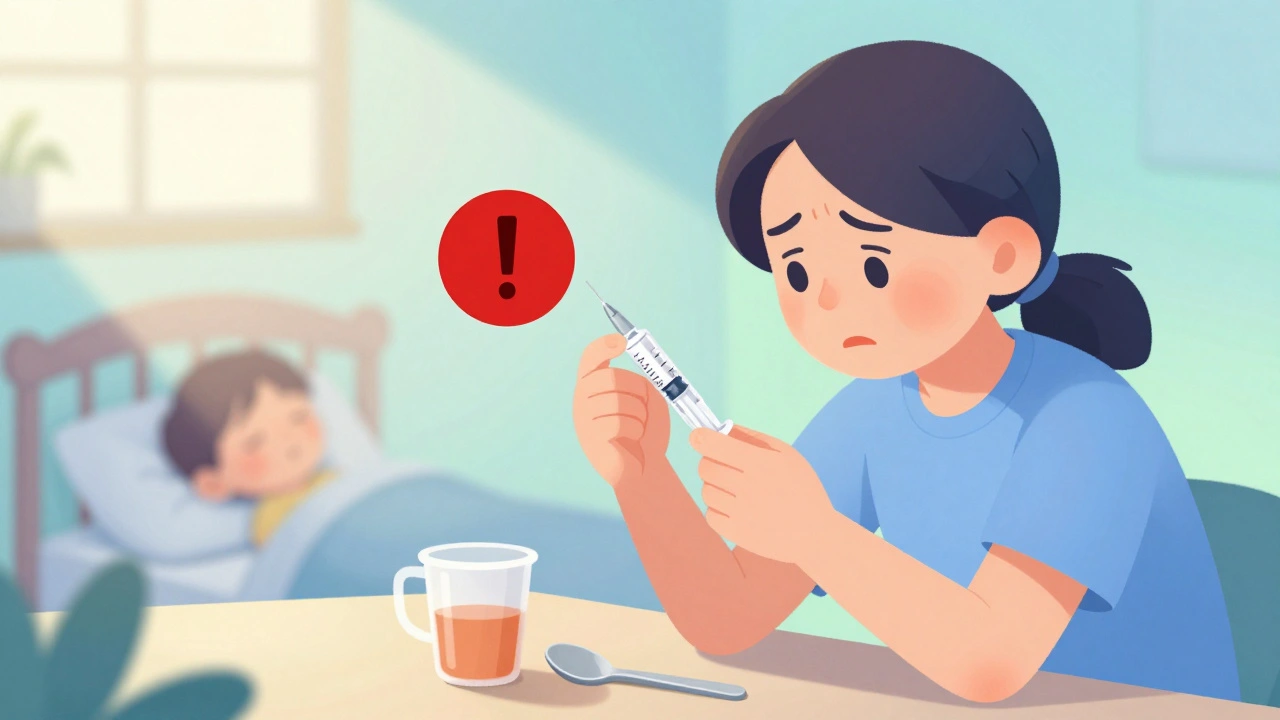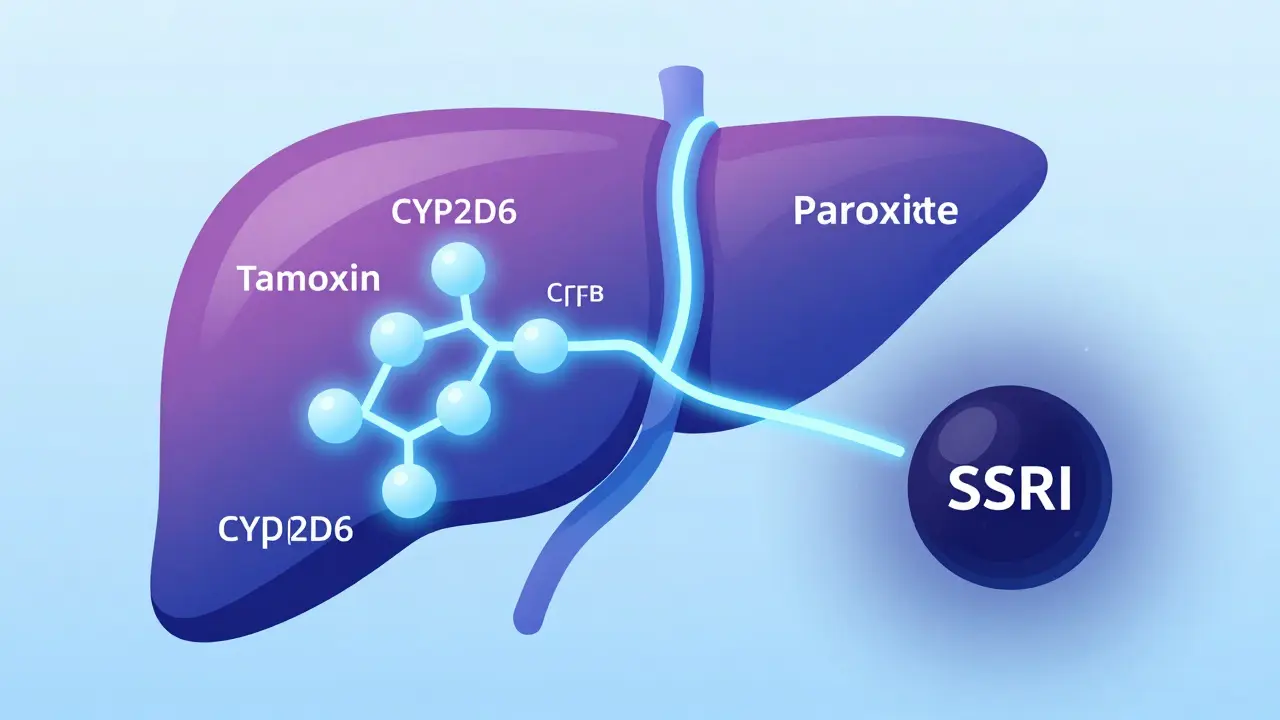An Introduction to Anemia and Liver Disease
Anemia and liver disease are two seemingly different medical conditions, but they are actually closely connected. In this article, we will take a closer look at the relationship between anemia and liver disease, as well as their causes, symptoms, and potential treatment options. My goal is to provide you with a comprehensive understanding of these conditions so that you can make informed decisions about your health or the health of your loved ones.
Understanding Anemia: Types, Causes, and Symptoms
Anemia is a condition characterized by a decrease in the number of red blood cells or a reduction in the amount of hemoglobin in the blood. Hemoglobin is a protein that carries oxygen from the lungs to the rest of the body, so a decrease in its levels can lead to various health issues. There are several types of anemia, including iron-deficiency anemia, hemolytic anemia, and aplastic anemia, among others. Some common causes of anemia include poor diet, blood loss, and certain diseases.
The symptoms of anemia can vary depending on the severity and type of the condition. However, some common signs include fatigue, weakness, pale skin, shortness of breath, and dizziness. If left untreated, anemia can lead to serious complications such as heart problems, growth and development issues in children, and even death.
Understanding Liver Disease: Types, Causes, and Symptoms
Liver disease refers to any condition that affects the liver and its function. The liver is an essential organ that helps in the digestion of food, detoxification of harmful substances, and regulation of blood sugar levels, among other vital functions. There are various types of liver diseases, including cirrhosis, hepatitis, and fatty liver disease.
Some common causes of liver disease include alcohol abuse, viral infections, and certain medications. Symptoms of liver disease can also be diverse, but they often include jaundice (yellowing of the skin and eyes), abdominal pain, nausea, vomiting, and fatigue. Like anemia, liver disease can lead to serious complications if left untreated, such as liver failure, liver cancer, or even death.
The Connection Between Anemia and Liver Disease
Now that we have a basic understanding of anemia and liver disease, let's explore the relationship between these two conditions. Anemia can be both a cause and a result of liver disease. Liver disease can lead to anemia through several mechanisms, such as:
Impaired Red Blood Cell Production
The liver plays a crucial role in the production of red blood cells by producing a hormone called erythropoietin, which stimulates the bone marrow to produce red blood cells. In liver disease, the production of erythropoietin may be impaired, leading to a reduced number of red blood cells and, consequently, anemia.
Increased Hemolysis
Hemolysis is the destruction of red blood cells, and it can occur more rapidly in individuals with liver disease. The liver is responsible for breaking down old or damaged red blood cells, but in cases of liver disease, this process may become overactive, resulting in an increased destruction of red blood cells and anemia.
Bleeding and Blood Loss
Liver disease can cause bleeding disorders due to a decrease in the production of clotting factors, which are essential for blood coagulation. This can lead to an increased risk of bleeding and blood loss, which can, in turn, result in anemia.
Diagnosing Anemia and Liver Disease
If you or a loved one is experiencing symptoms suggestive of anemia or liver disease, it is essential to consult with a healthcare professional for a proper diagnosis. Blood tests are typically the first step in diagnosing both conditions. For anemia, a complete blood count (CBC) test can help determine the number and size of red blood cells, as well as the hemoglobin levels. For liver disease, liver function tests (LFTs) can help evaluate the health and functionality of the liver by measuring the levels of certain enzymes and proteins in the blood.
In some cases, additional tests may be needed to identify the specific cause of the anemia or liver disease, such as imaging studies, bone marrow biopsy, or liver biopsy.
Treatment Options for Anemia and Liver Disease
The treatment of anemia and liver disease will depend on the underlying cause, severity, and the presence of any complications. For anemia, treatment options may include iron supplements, vitamin B12 injections, or even blood transfusions in severe cases. For liver disease, treatment may involve lifestyle changes (such as avoiding alcohol), medications, or even liver transplantation in severe cases.
It is essential to work closely with your healthcare provider to determine the most appropriate treatment plan for your specific situation. Early detection and treatment of both anemia and liver disease can help improve outcomes and prevent complications.
Preventive Measures for Anemia and Liver Disease
While not all cases of anemia and liver disease can be prevented, there are some steps you can take to reduce your risk of developing these conditions. These include:
- Maintaining a balanced diet rich in iron, vitamins, and minerals
- Limiting alcohol intake
- Avoiding risky behaviors that can lead to viral infections (such as hepatitis)
- Regularly monitoring your health, especially if you have a family history of anemia or liver disease
- Consulting with your healthcare provider about any medications or supplements you are taking that may affect your liver
Conclusion
In conclusion, anemia and liver disease are closely related conditions that can impact each other in various ways. Understanding the relationship between these two conditions is crucial for proper diagnosis, treatment, and prevention. If you suspect that you or a loved one may be affected by anemia, liver disease, or both, it is essential to consult with a healthcare professional for guidance and support.







Keli Richards
April 30, 2023 AT 02:02Thanks for putting this together, it’s a solid overview of how anemia and liver issues intersect and why they matter for patients.
Ravikumar Padala
May 5, 2023 AT 20:56The relationship between anemia and liver disease is indeed multifaceted.
The liver’s role in producing erythropoietin directly influences red blood cell generation.
When hepatic function declines, erythropoietin synthesis can become insufficient.
This deficiency contributes to a decreased red cell count and manifests as anemia.
Moreover, the liver is involved in the recycling of iron from senescent erythrocytes.
Impaired hepatic recycling can lead to iron sequestration and functional iron deficiency.
In addition, portal hypertension often associated with cirrhosis can cause splenomegaly.
An enlarged spleen may sequester and prematurely destroy circulating blood cells.
This hypersplenism further exacerbates anemia by increasing hemolysis.
Chronic liver disease also predisposes patients to nutritional deficiencies.
Poor intake or malabsorption of vitamin B12 and folate can result in macrocytic anemia.
Coagulopathy, another hallmark of liver impairment, raises the risk of gastrointestinal bleeding.
Persistent occult bleeding can steadily deplete iron stores, leading to iron‑deficiency anemia.
Clinically, these overlapping mechanisms mean that treating the underlying liver pathology is crucial for correcting anemia.
Therefore, a multidisciplinary approach that addresses both hepatic health and hematologic parameters offers the best chance for patient recovery.
King Shayne I
May 11, 2023 AT 15:49Look, the article kinda repeats the same stuff over and over, and it’s not even that accurate. It’s just a bunch of generic advice.
jennifer jackson
May 17, 2023 AT 10:42Great read.
Brenda Martinez
May 23, 2023 AT 05:36Oh wow, this post really tries to dazzle us with its grandiose claims about the link between anemia and liver disease, but let’s not get carried away! The author paints a picture of a perfect symphony where every organ plays in flawless harmony, yet in reality, the body is a messy, chaotic battlefield. One moment you’re talking about erythropoietin, the next you’re diving into iron recycling – it’s like watching a drama unfold without a script. I can’t help but feel the dramatic flair is overkill, making the whole thing feel staged. Still, there’s some truth in the layers of interaction, even if the delivery feels theatrical.
Marlene Schanz
May 29, 2023 AT 00:29Yous very helpful tip here i think its good 2 keep an eye on diet and avoid excess alchol also get regular checkups keep it simple and stay safe
Matthew Ulvik
June 3, 2023 AT 19:22Hey folks, just wanted to say this info is super useful 😊. Keep it simple, stay hydrated, and don’t forget your iron‑rich foods!
Dharmendra Singh
June 9, 2023 AT 14:16Ths article does a decent job but it could use more details on the cultural aspects of diet in diff regions. Also, watch out for typos like "alchol" and "anemia" spelled incorrectly.
Rocco Abel
June 15, 2023 AT 09:09One must appreciate the sophisticated discourse presented herein, though one cannot ignore the subtle undercurrents of hidden agendas that pervade modern medical literature. It is, after all, a well‑known fact that certain industries subtly influence research outcomes.
Dawn Mich
June 21, 2023 AT 04:02Don’t be fooled by fancy language – the real issue is that many doctors overlook simple blood work and push expensive treatments. This is exactly how the system keeps us dependent.
Eric Sevigny
June 26, 2023 AT 22:56I think the guide is helpful overall, though a few clarifications could improve it. For example, outlining the specific labs to order would be great.
Glenda Rosa
July 2, 2023 AT 17:49Sure, the piece is informative, but let’s not pretend it’s the be‑all‑and‑end‑all of medical knowledge. There’s always more nuance beneath the surface, especially when it comes to liver‑related anemia.
charlise webster
July 8, 2023 AT 12:42While the article covers the basics, I can’t help but point out that the emphasis on diet is somewhat overstated. There are other factors at play.
lata Kide
July 14, 2023 AT 07:36OMG this is like the most exciting read ever! 🎉 I’m totally blown away by how everything ties together! 😱💥 Let’s all share this and spread the knowledge! 🌟✨
Mark Eddinger
July 20, 2023 AT 02:29In reviewing the text, a few grammatical adjustments are advisable: replace “their” with “there” where appropriate, and ensure consistent use of the Oxford comma for clarity.
Francisco Garcia
July 25, 2023 AT 21:22I find the intersection of nutrition, hematology, and hepatology fascinating. It would be interesting to explore how cultural dietary patterns influence the prevalence of anemia in patients with chronic liver disease.
Patrick Renneker
July 31, 2023 AT 16:16While the exposition maintains a veneer of scholarly rigor, one must remain vigilant to the subtle proclivities toward unfounded speculation that permeate such discourses. The propensity to extrapolate beyond evidentiary bounds, however eloquently articulated, poses a risk to both practitioner and patient alike; it is incumbent upon the discerning reader to parse the probabilistic claims with a measure of healthy scepticism.